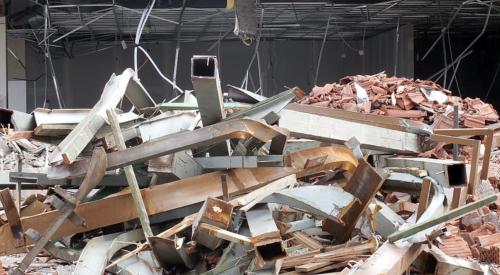|
In November 2005, the Base Realignment and Closure (BRAC) commission approved 22 closures, recommended realignment for seven and left five bases open. What does this mean for builders? Those 22 closed bases will eventually appear on the market for sale. In a time of decreasing availability of developable real estate, bases closings — which often are near large metropolitan areas — can provide some of the largest expanses of undeveloped and valuable land in the country.
Researching & purchasingIn February 2005, Lennar Corporation came in with the highest bid for Marine Air Station, El Toro, Calif., in an online auction. Lennar's purchase of the four-parcel property totals 3,718 acres, for $649.5 million. The El Toro base closed as a result of the 1993 BRAC list. Thirteen years later, the real estate was purchased.
 |
| This ariel shot shows the amount of land available when Naval Air Station Alameda, closed during the 1993 closures. |
Although El Toro sold in an online auction, that may not occur for all future sales. Each base will be dealt with on a case-by-case basis, depending on land availability and approval of environmental safety. In addition, whole bases may not sell in single auctions. "More likely what will happen is different parts of the base will be bid at various times," according to Richard Dorrier. He is principal and vice president in EDAW Inc.'s Alexandria, Va. Office. EDAW Inc. works with the government and developers to redevelop base closings from a land and community planning prospective.
Waiting for possessionBuilders and developers purchasing bases must work with the local as well as federal government officials. The local government must establish a Local Redevelopment Authority (LRA) to initiate and guide the reuse process. To assist communities, Congress enacted the Base Communities Assistance Act (BCAA) in 1994. The BCAA helps overcome job loss due to base closings by supporting economic development and helping workers learn new job skills.
In addition, it provides assistance resolving environmental issues and delivers planning grants.
Relocating current Military personnel takes place before process planning begins. "The government has to have new buildings and homes already constructed or available at another base to move those people," Dorrier says.
After relocation, the government prepares and cleans the land. Some bases contain environmental contamination, inadequate infrastructure, buildings not up to code, and, occasionally, unexploded weaponry. The BCAA expedites clean up, but the developer/builder must stay in the loop.
Working togetherPossession of the land passes to the developer/builder after clean up. As part of possession, builders must negotiate building new utility systems, roads, parks, schools, and public service facilities.
Once everyone agrees to a final plan, building starts. In all, the process of purchasing and redeveloping a military base closure can take up to ten years. "They are and can be very rewarding to certain developers if you're willing to work in the kind of environment that has more regulatory and government oversight," Dorrier says.
|












